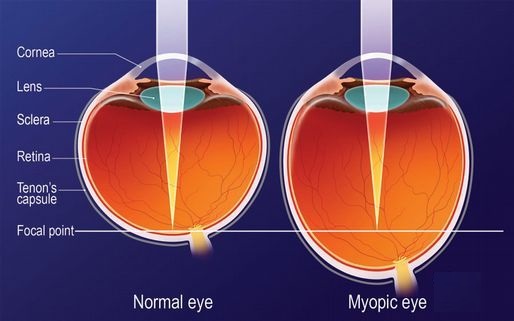Axial Elongation
Axial elongation refers to the length of the eye. The eye measurement is from the front (cornea) to the back (retina) of the eye. Nearsighted (myopic) people need to use minus powers lenses. The power the lenses increase as the eye grows longer. What that means is that more minus power is required to focus light further back to reach the eye's retina.
Average measurements
The axial length of adults without nearsightedness between the ages of 21 and 40 is 22.86mm. Nearsighted people have longer eyes, a larger axial length. 4.8% of the eyes with an axial length of 27.5 mm to 28.4 mm will develop serious eye problems. 32.9% in the eyes with an axial length between 29.5 mm to 30.4 mm will have eye pathologies(1).
- At birth, the axial length is approximately 17 mm
- Each mm of change in axial length of the eye corresponds to about 2.5 D
- High Myopia is -6.00 and up, and is a risk factor to many eye problems.
Measuring the eye
Abnormal lengthening of the eye is a concern. In other words, overgrowth of the eye is not healthy. The eye length can be measured using a non-invasive instrument called an A-Scan. This scan is safe and painless. In the past A-scans were not necessary, but as myopia has increased at an alarming rate, it is becoming an essential tool. There are many reasons to have eye exams regularly. Above all, it keeps you healthy.
Eye Q Optometrist specializes in pediatric myopia control and management. They are incorporating A-Scans at no extra charge for children in their practice. The scans will be recommended once a year or more, depending on the child. You can schedule an appointment online here.
- J Clin Diagn Res. 2013 Oct; 7(10): 2211–2212. Published online 2013 Oct 5. Doi 10.7860/JCDR/2013/7015.3473

